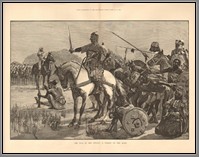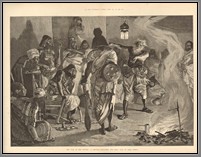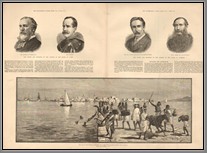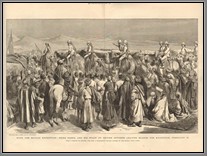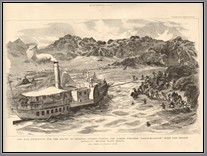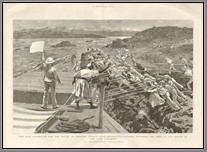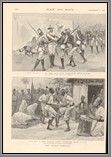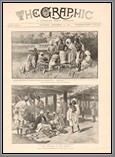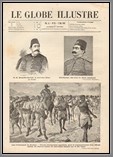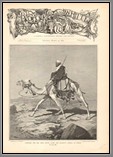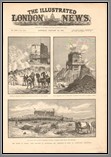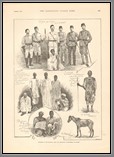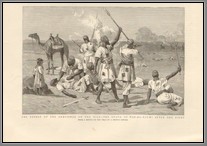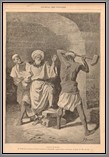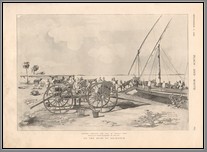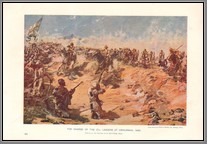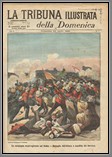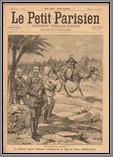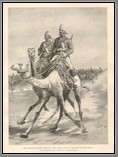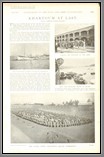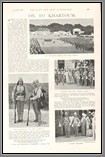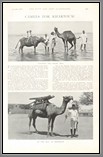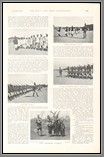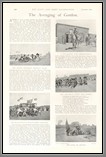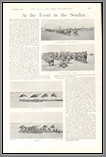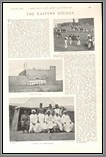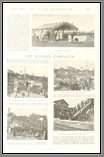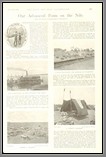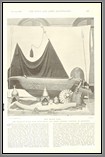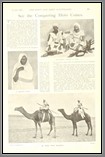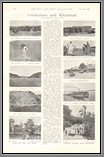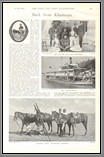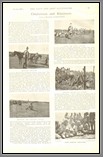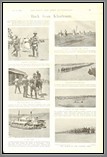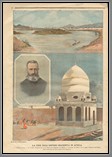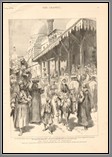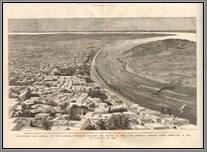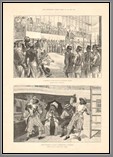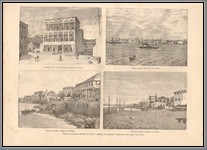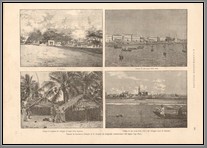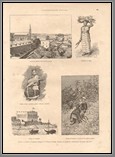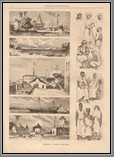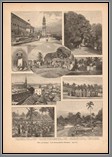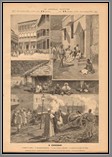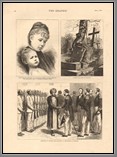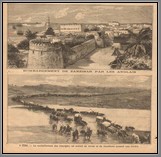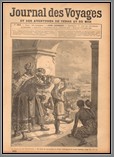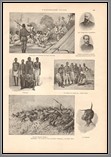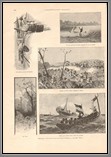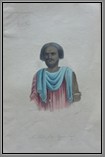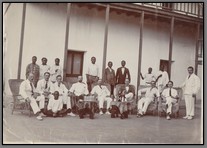British East / Central Africa
A collection of 46 illustrations from the British reconquest of the Sudan, 1886-1898. B
Price: $920.00
Note: Britain decided to reconquer the Sudan, which was controlled by the Mahdists under the khalifa Abdullah (1846?-1899) and which was of increasing colonial interest to the Italians and French in Africa. An Anglo-Egyptian army, led by General Kitchener (1850-1916) advanced south from Egypt up the Nile River into the Sudan. Accompanied by a river gunboat flotilla, Kitchener constructed a railway as he moved and encountered stiff resistance from the Mahdists.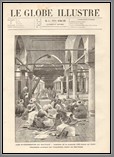 BRA 083
BRA 083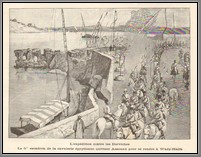 BRA 083 The Anglo-Egyptian force captured Dongola (September 21, 1896) and Abu Hamed (August 7, 1897) and was victorious against the Mahdists at the Battle of Atbara River (April 8, 1898). A 40,000 man army of dervishes and Mahdists, under the command of the khalifa, savagely attacked Kitchener’s army of about 26,000 men at Omdurman on the Nile, just north of Khartoum, on September 2, 1898. The attack was repelled with machine guns, and the khalifa suffered heavy casualties. Kitchener counterattacked, and his cavalry – the 21st Lancers, among whom was Winston Churchill (1874-1965) – bravely drove the dervishes from the field. During the five hour battle, abut 11,000 Mahdists died wheras Anglo-Egyptian losses amounted to 48 dead and fewer than 400 wounded.
BRA 083 The Anglo-Egyptian force captured Dongola (September 21, 1896) and Abu Hamed (August 7, 1897) and was victorious against the Mahdists at the Battle of Atbara River (April 8, 1898). A 40,000 man army of dervishes and Mahdists, under the command of the khalifa, savagely attacked Kitchener’s army of about 26,000 men at Omdurman on the Nile, just north of Khartoum, on September 2, 1898. The attack was repelled with machine guns, and the khalifa suffered heavy casualties. Kitchener counterattacked, and his cavalry – the 21st Lancers, among whom was Winston Churchill (1874-1965) – bravely drove the dervishes from the field. During the five hour battle, abut 11,000 Mahdists died wheras Anglo-Egyptian losses amounted to 48 dead and fewer than 400 wounded.
The khalifa and his remaining forces took flight and were pursued into Kordofan, where they managed to hold their ground for more than a year. On November 24, 1899, the Mahdists forces were completely destroyed, and the khalifa was slain in battle. The condominium government of the Anglo-Egyptian Sudan was then established.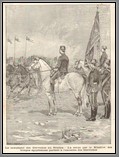 BRA 083
BRA 083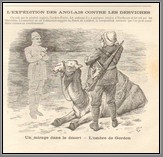 BRA 083
BRA 083
Mopping-up operations required several years, but organized resistance ended when the khalifa was killed. Sudan’s economy had been all but destroyed during his reign and the population had declined by approximately half because of famine, disease, persecution, and warfare. Moreover, none of the country’s traditional institutions or loyalties remained intact. Tribes had been divided in their attitudes toward Mahdism, religous brotherhoods had been weakened, and orthodox religous leaders had vanished.
Two illustrations from L’Illustrazione Italiana on the colonial defeat at Elbejet in December, 1889. B
Price: $50.00
Note: The German explorer Carl Peters had been sent to Uganda in an attempt to seize it from the British, but on the way he launched an unprovoked attack on a village of the Laikipiak Masai on a hill known as Elbejet. Peters and 35 ‘askaris’ – locally raised African soldiers - attacked at dawn while the unsuspecting Masai were asleep, and succeeded in capturing the village and 2,000 cattle. However the warriors regrouped at the bottom of the hill and threatened Peters’ camp, forcing him to fall back to defend it. The camp was struck and the expedition began a fighting retreat, pursued by the Masai, who speared several of the askaris and came near to killing Peters himself. Peters later tried to portray the fight as a victory, but he had been forced to abandon most of the cattle and had only saved the expedition by a hurried escape.

